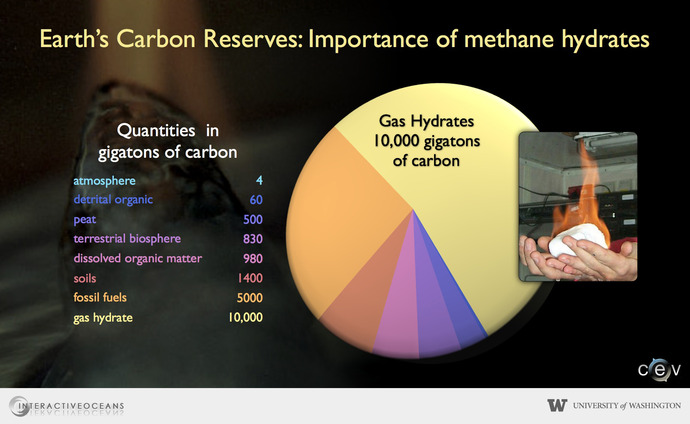Hydrates are an immense carbon reservoir.
Massive deposits of frozen methane in the form of methane hydrate lie buried within the ocean sediments and may be a future energy source, a major contributor to climate change, or both. It is estimated that gigatons of gas hydrates lie buried and partially exposed along the global continental margins, rivaling oil, coal, and natural gas concentrations combined. Pound for pound, methane is ~25 times more potent than carbon dioxide as a greenhouse gas. The global amount of carbon bound as gas hydrates is estimated to be two times that of carbon in all known fossil fuels. Hence, there is significant interest in hydrates as future energy sources.
The hydrates form from methane and water at low temperatures and moderate pressures and are common along the coast of Washington and Oregon due to thick sediment accumulation along the continental margin, breakdown of organic material, and mediation by subseafloor microbes.
One of the most well-studied methane hydrate sites is Hydrate Ridge, west of Newport Oregon. It is an intense area of focus for the Ocean Observatories Initiative Regional Scale Nodes. Here, a suite of cabled seismometers, cameras, and chemical sensors will provide real-time information on the linkages among seafloor earthquakes, release of methane into the water column, and changes in animal and microbial communities due to these perturbations. These data and live imagery will be available 24/7 to scientists, educators, and the public over the Internet. The research is not for exploitation of the area, but is focused on the natural state of the system to better understand how gas hydrates form and their linkages to life on the seafloor.



